NEWS
Buddhist History Brought Back to Life in Afghan Museum
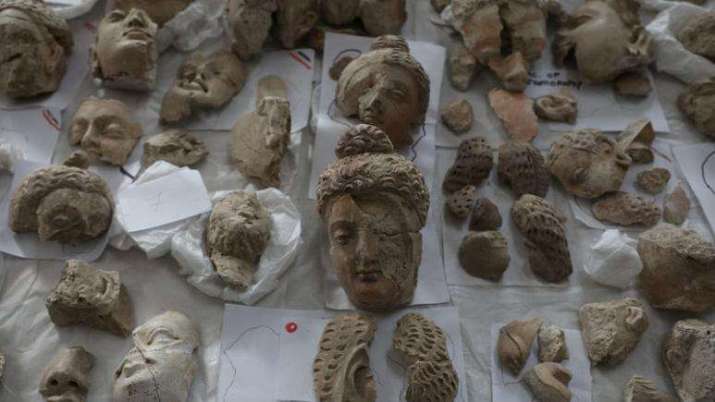 From euronews.com
From euronews.comConservators at the National Museum of Afghanistan in Kabul are restoring many Buddhist artifacts damaged by the Taliban regime in the early 2000s. The artifacts date to the third century and include a wide range of pieces, from intricate hand-sized carvings to much larger statues of buddhas and bodhisattvas. The work is supported by grants from the US Department of State and is assisted by researchers from the University of Chicago’s Oriental Institute. Those leading the work say it is like reconstructing a 1,500-year-old jigsaw puzzle.
“It is very important [work] because it is actually restoration of our heritage, our identity, our past,” said the museum’s director, Mohammad Fahim Rahimi. (Reuters)
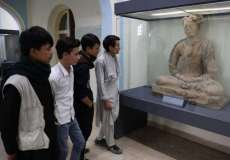 Students view a statue at the National Museum in Kabul. From reuters.com
Students view a statue at the National Museum in Kabul. From reuters.com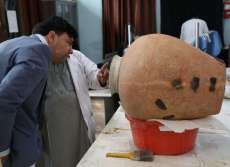 Mohammad Fahim Rahimi, director of the National Museum in Kabul. From reuters.com
Mohammad Fahim Rahimi, director of the National Museum in Kabul. From reuters.comThe geographical area of what is now Afghanistan was at the heart of a rich trade route over centuries spanning from the time of Alexander the Great (356–23 BCE) until the Muslim conquests of Afghanistan that began in the 9th–10th centuries CE.
“Buddhism was practiced here for more than 1,000 years. That’s a very large part of our history,” Rahimi said. (Reuters)
The most notable works of Buddhist art from this time are the Bamiyan Buddhas, two standing statues that were 38 meters and 55 meters high, respectively. Both were destroyed by the Taliban in March 2001, before the regime’s fall later that year. Almost immediately following the Taliban’s departure, staff at the museum began restoring the scattered remnants of the country’s Buddhist heritage.
Conservator Sherazuddin Saifi worked at the museum during Taliban rule in 2001. “They wanted us to tell them the number of antiquities and we ignored their request, but some days later they came and started breaking the antiquities,” said Saifi, who still works at the museum today. (Reuters)
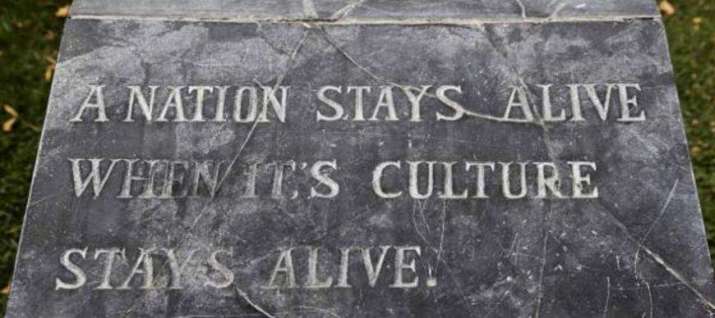 A plaque outside of the National Museum of Afghanistan. From uchicago.edu
A plaque outside of the National Museum of Afghanistan. From uchicago.eduAfghanistan, along with its cultural treasures, endured four decades of continuous war, from the Soviet invasion in 1979 to the regional strife that continues to erupt to this day. According to the University of Chicago’s Oriental Institute, the National Museum of Afghanistan was particularly hard-hit: “An estimated 70 per cent of the objects were looted, while 90 per cent of the object registration records were destroyed.” (University of Chicago)
The institute has been working since 2012 to carry out four major projects in the country. Along with their partnership with the National Museum, the institute is using satellite imagery to help map the country’s archeological sites, and training staff at the Afghan Institute of Archaeology to locate these sites. They are also helping to develop an outreach program to high schools in cities throughout the country to bring presentation materials to students who otherwise would not be able to experience them.
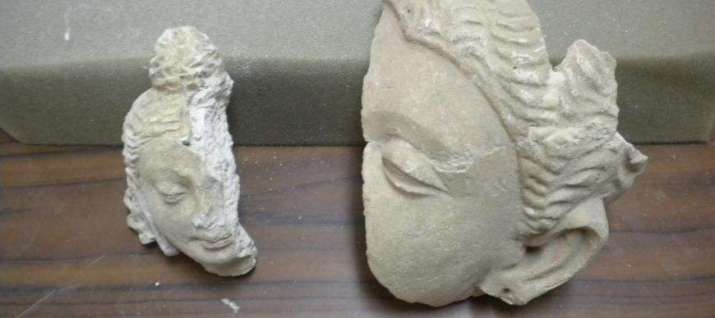 Hadda sculpture damaged by the Taliban. From uchicago.edu
Hadda sculpture damaged by the Taliban. From uchicago.eduOne of the most ambitious initiatives is the Hadda Sculptural Restoration Project, which aims to “re-assemble and restore an estimated 250–300 Gandharan-style sculptures from early Buddhist monastery sites at Hadda, near the Khyber Pass in southeast Afghanistan. These 1,500-year-old sculptures were systematically sledge-hammered into pieces by the Taliban in 2001.” (University of Chicago)
In July, the British Museum began repatriating sculptures that had disappeared from Afghanistan during Taliban rule.* Although ousted from power in 2001, the Taliban have remained an active force in the country, leading some to worry about the fate of these rare and delicate objects.
“These antiquities are the national treasure and the history of our country and show who lived in this country,” Rahimi said. (Reuters)
* British Museum to Return “Stunning” Gandharan Buddhist Artifacts to Afghanistan
See more
Research Projects of the Oriental Institute (University of Chicago)
Afghan museum restores Buddhist history, one broken piece at a time (Reuters)
Related news from Buddhistdoor Global
British Museum’s Revamped Sir Joseph Hotung Gallery Offers a Fresh Perspective on South Asian Buddhist Art
The British Museum Reimagines Buddhist Shrine and Ancient Pilgrims with Smartphone Technology
First exhibition of Gandhara Buddhist Antiquities Opens in South Korea
From Gandhāra to Gupta
Layers of Indo-Greek City Discovered in Swat Valley, Pakistan














